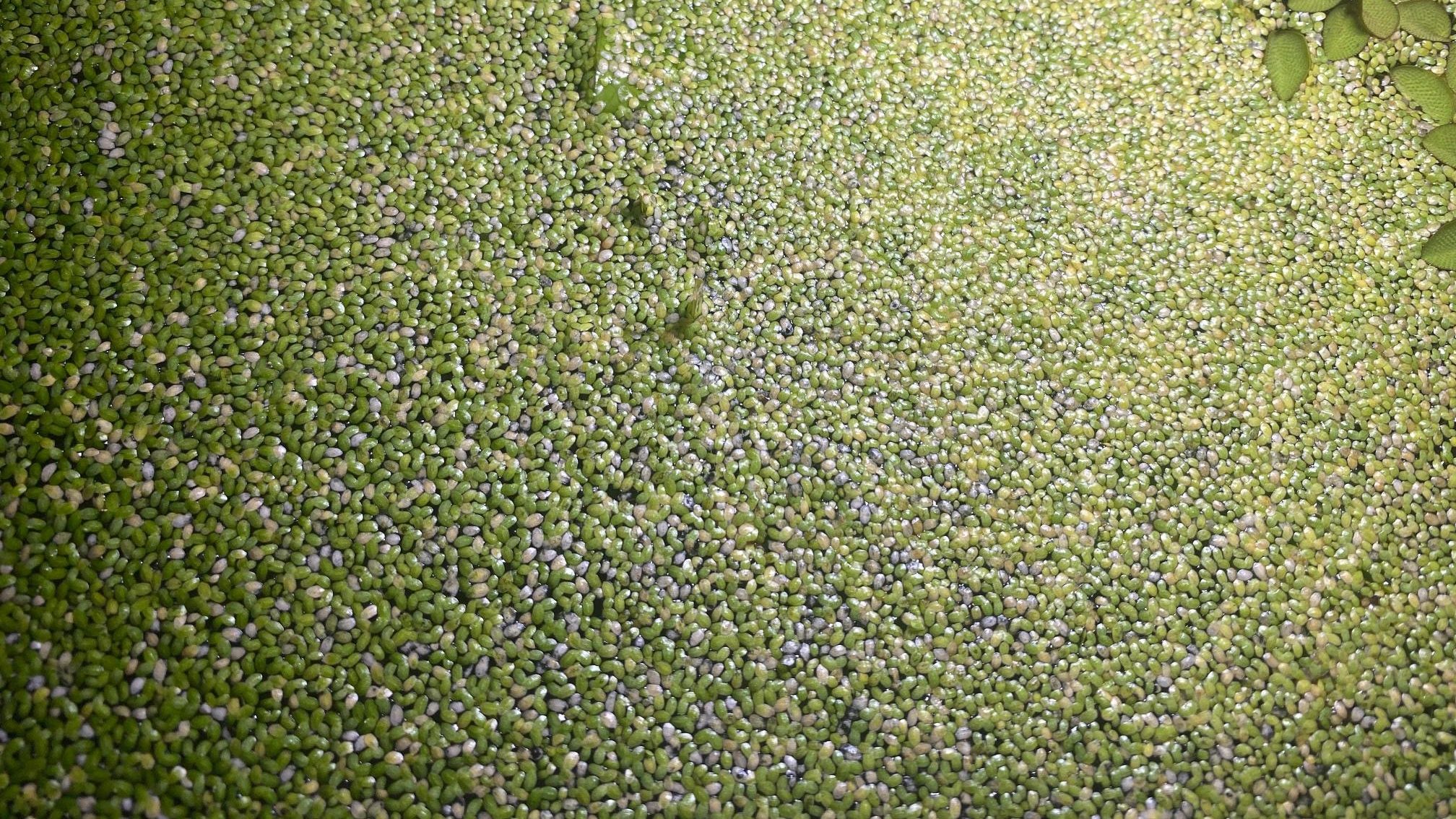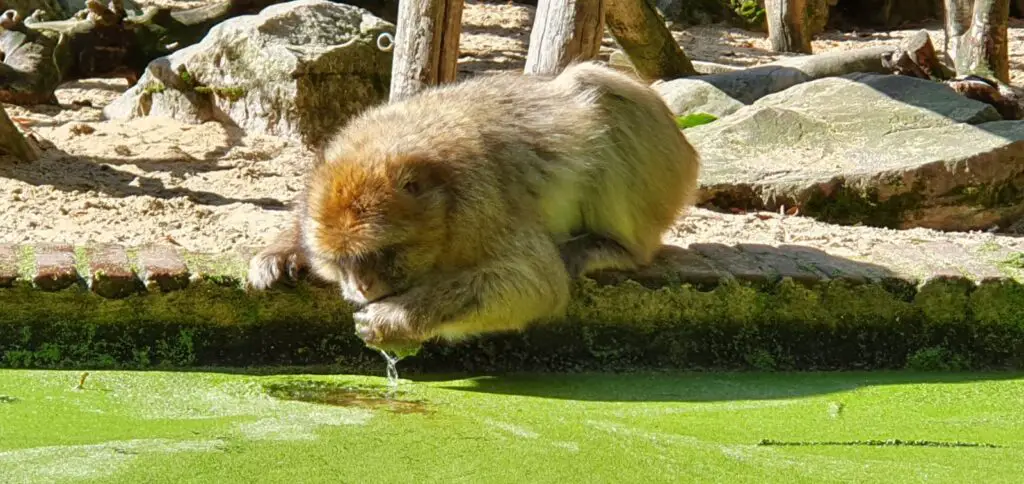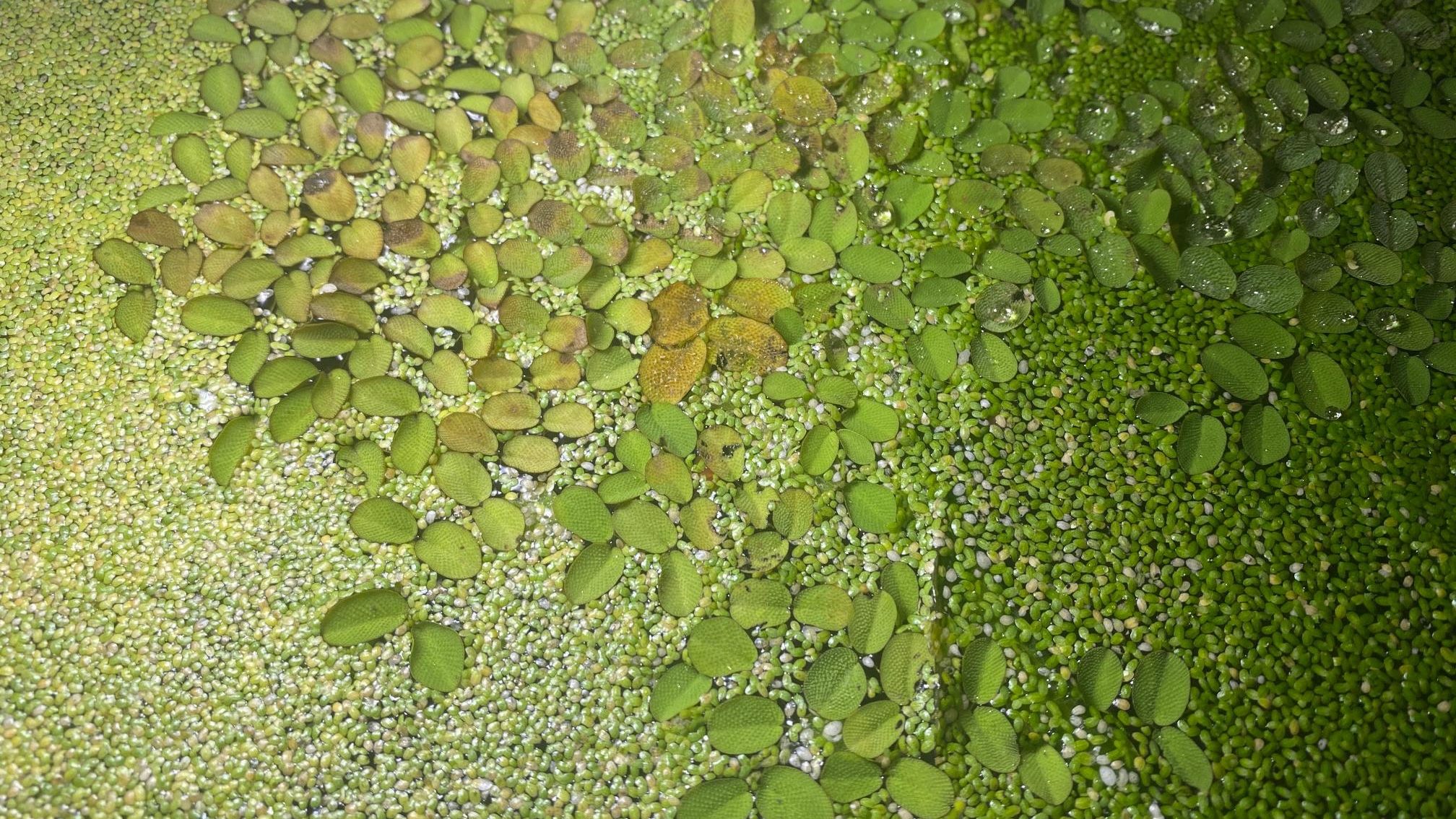Having a freshwater aquarium can be a rewarding yet challenging pursuit. There are several things to check regularly to ensure everything stays healthy and happy. This means ensuring plenty of plants for your fish and maintaining the ecosystem’s pH balance.
Many people have heard of duckweed for use in an aquarium, but hobbyists should note many pros and cons before including it. Some of these include nutrient uptake, shade, how fast it grows, and providing cover for fish. What compounds this is that the very things that it can help can also harm your tank.
If you’re new to the fish-keeping game and you’re thinking about including some duckweed, continue reading to learn more about this plant and what it does. There are many great things about it, but some pitfalls too.
Duckweed Botany
Hailing from the Araceae (or aroid) family in the Lemna genus, this small flowering plant floats on water and produces some of the most beautiful micro blooms. Duckweed comprises an entire class of such plants, and there are several species, but they are difficult to distinguish from one another.
The most common for aquariums is Lemna minor or common duckweed. These have four leaves per plant, and a visible root hangs from the center. The leaves are round or oval and only a few millimeters wide. Their flowers are so small they’re difficult to see with the naked eye.

Appearance and Growing Conditions of Duckweed
Duckweed appears as a floating mat in waters with temperatures ranging between 42°F and 92°F (5.6°C to 33.3°C). They love tropical climates with total light exposure and a water pH of around 7.0. However, they can adapt to more alkaline or acidic conditions along with lower lighting if necessary.
This adaptability means you can find duckweed on any continent worldwide. They love rivers, ponds, and lakes with slow-moving currents. However, it isn’t native to places like South America or Australia.
Duckweed, a Fast Growing Plant
But their method of growth is unusual in the way of plants. Their ideal water and temperature conditions can double as they get bigger. This can occur as quickly as overnight. Plus, they will eventually split into separate plants.
Duckweed’s Purpose in The Wild
Duckweed serves several vital purposes in the wild. It protects creatures like amphibians, fish, insects, and even monkeys. The large, dense mats also give sanctuary for fry and larvae. Plus, duckweed delivers rich nutrients and minerals to the same species it helps protect as well as birds.

The Benefits of Duckweed in An Aquarium
Duckweed is an excellent plant to maintain water quality and combat algae. It’s beautiful and adds an unusual quality to an aquarium because of how it sits on the surface of the water.
It has a fantastic ability to take in nutrients relatively fast, which makes it ideal for reducing excess fish food and waste. This activity has the potential for human use as well. Even scientists are finding ways to extract certain constituents, like proteins, for advancements in biomedicine.

Listing the Benefits of Duckweed
Therefore, there are plethoras of benefits to having duckweed in your aquarium. Things like protection and shade for your fish and general aesthetics and nutrient control are ideal.
- Protection: All kinds of aquatic critters benefit from the protection duckweed offers. This is great for shier fish, especially in minimal tanks where there aren’t many places to hide. Plus, it provides a good breeding and spawning ground, protecting fry and larvae from other tank mates that might eat them.
- Shade: Aside from protection, the duckweed gives shade to fish that like it cooler, along with plants that reside lower in the tank. Plus, shade is the number one deterrent for algae growth since it limits lighting.
- Aesthetics: Duckweed’s diminutive, floating nature provides a beautiful texture and dynamic within an aquascape. They’re lush and green and provide that pop of color that looks stunning against the backdrop of vibrantly colored fish. Also, it moves with the water current, which makes it mesmerizing to watch.
- Nutrient Control: Because of duckweed’s swift growth rate, it requires many nutrients like phosphates and nitrates. This helps control algae growth because duckweed outcompetes it for resources. It also helps balance unfavorable water parameters while keeping waste under control.
The Pitfalls of Duckweed in An Aquarium
Even though the benefits seem to be enough to want to include duckweed in an aquarium, there are several reasons why many aquarists avoid it. So, if you want to put this plant in your tank, ensure it will be appropriate for everything in it, including equipment.
Itemizing the Pitfalls of Duckweed
Unfortunately, many of the beneficial aspects of duckweed are also the cause of some of the pitfalls, such as nutrient uptake, speedy growth, and shade. But there are other things too, like equipment clogging.
- Nutrient Uptake: While the fast nutrient uptake of duckweed does wonders for algae, it can also suffocate other plants you don’t want to outcompete.
- Speedy Growth: The speed at which duckweed grows means it will take up even more nutrients than you need. This will deplete the tank, take up exorbitant amounts of space and cause an ammonia spike. If it takes up the expanse of the water’s surface, it will cut off oxygen for the rest of the tank’s inhabitants.
- Shade: While shade is ideal for controlling algae and providing cover for fish, it can unintentionally cover areas that need more light. Because duckweed is closer to the light source than most other plants in your tank, they can block them from getting adequate amounts of light. This will cause a die-off in your tank.
- Equipment Clog: The potential for duckweed to clog equipment, like filters and pumps, is pervasive. If an aquarist neglects to monitor and control its growth, it will get caught up in powerheads and intakes. This will be next to impossible to remove.
- Difficult to Control: Once duckweed establishes, keeping it under control is difficult. Even with the best monitoring, trimming, and removal, it can be something of a bear to deal with.
Side-By-Side Review of Duckweed
The following quickly reviews all points discussed above regarding the pros and cons of having duckweed in an aquarium.
| Pros | Cons |
| Provides protection and nesting for fish | It grows so fast that it’s difficult to control |
| It gives shade to fish and other plants | Can clog filters, pumps, and other equipment |
| It provides valuable nutrients and minerals | It takes up too many nutrients and too much light |
| It helps balance pH levels | Too much shade can have its own sets of problems |
| Helps control algae | Can cause a surge in ammonia |
| Beautifies any tank | Can choke off other fish and plants |
Final Thoughts
Duckweed is a generic name for all aquatic plants with the same family. While it can benefit plants, fish, and water quality, it can also create havoc for your equipment. It can even deprive everything in the tank of nutrients and other essential requirements, like oxygen.
